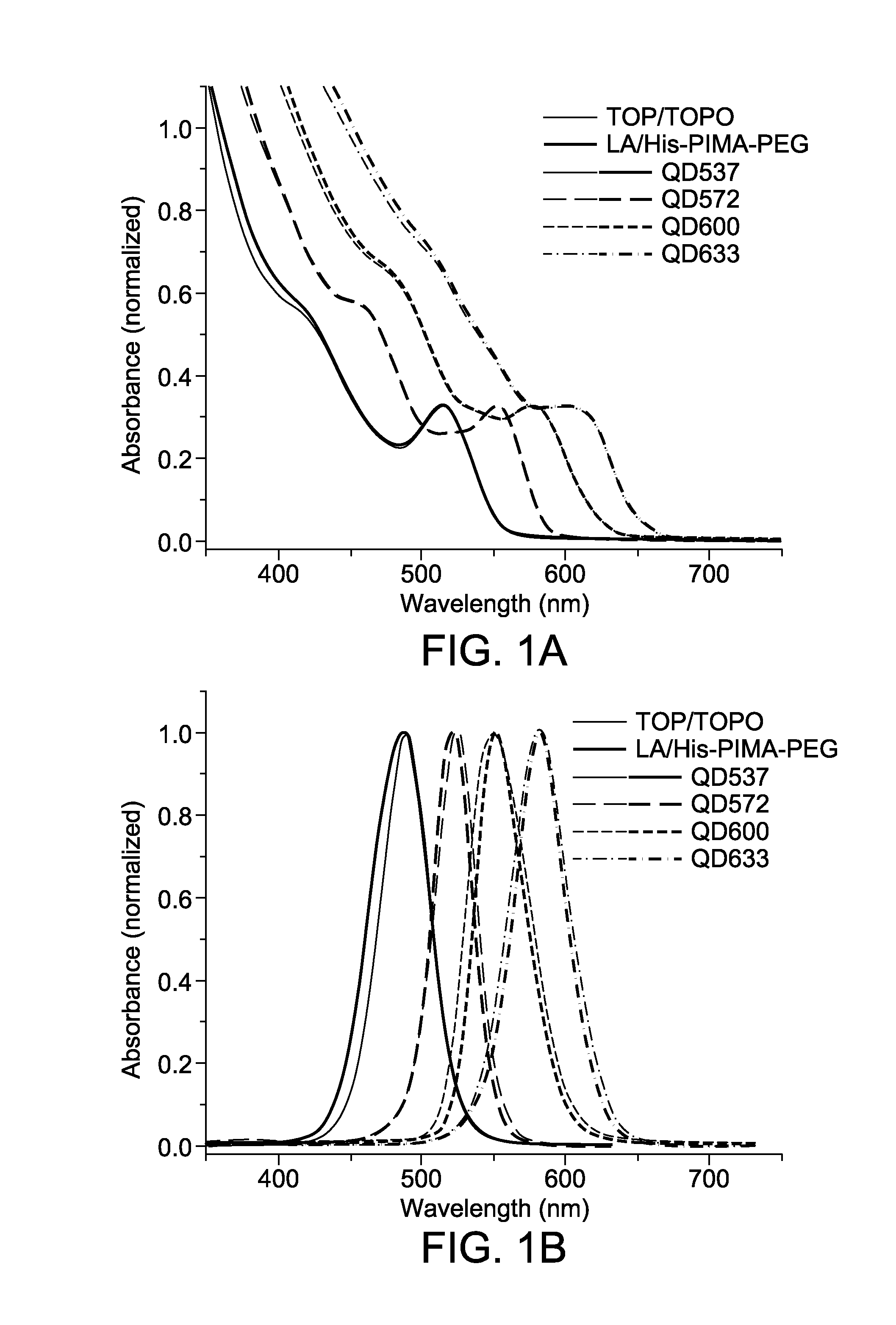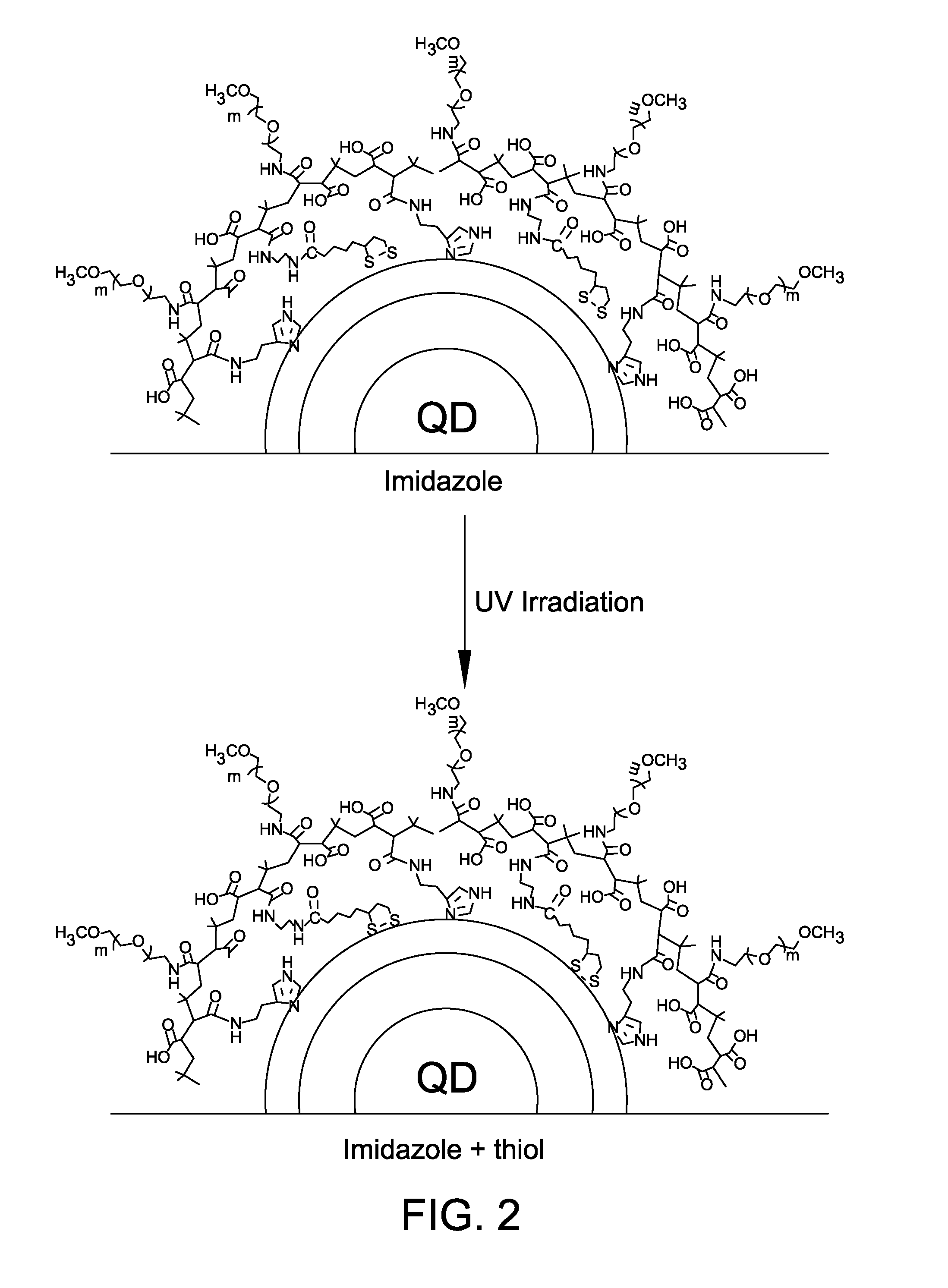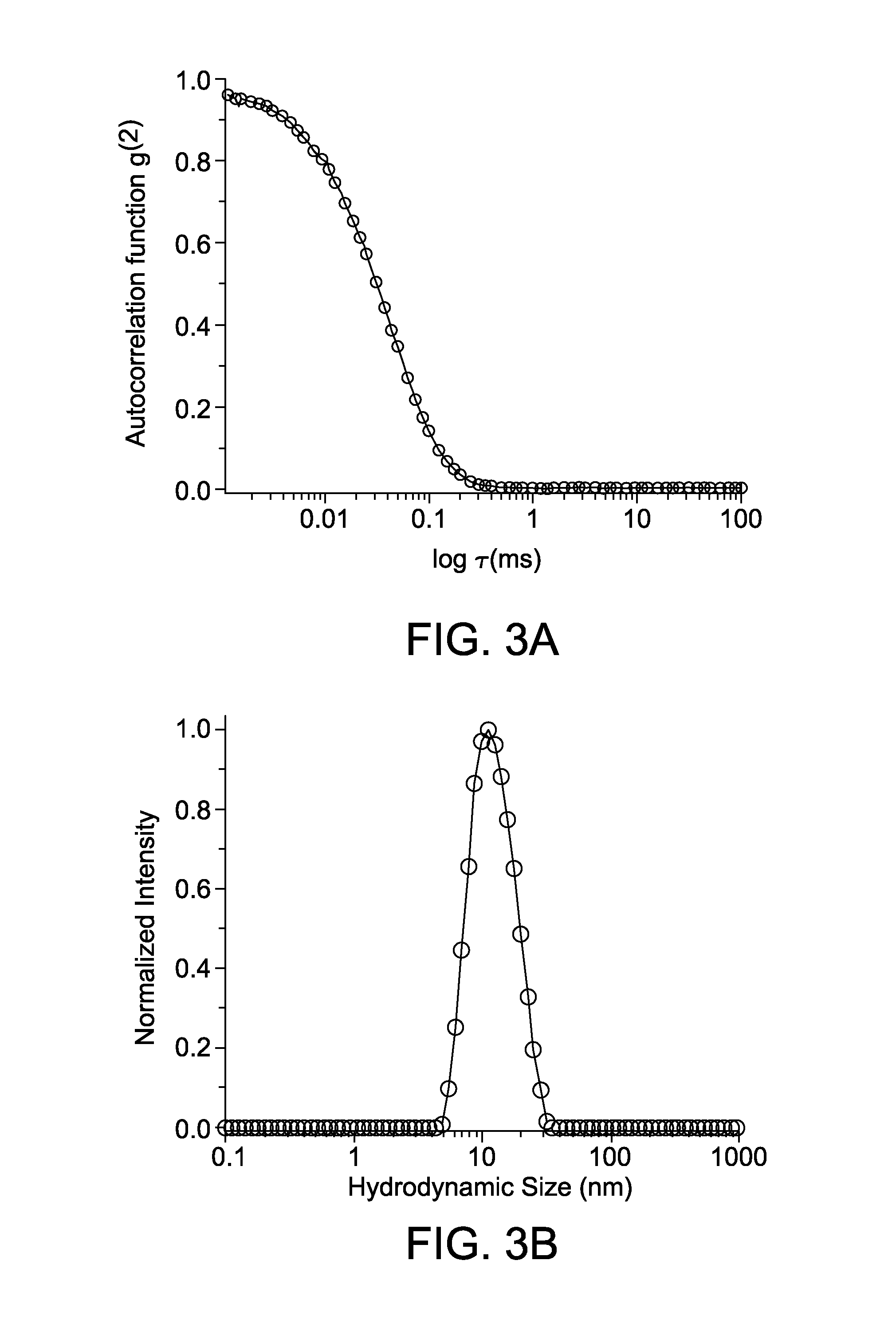Photoligation of an amphiphilic polymer with mixed coordination provides compact and reactive quantum dots
- Summary
- Abstract
- Description
- Claims
- Application Information
AI Technical Summary
Benefits of technology
Problems solved by technology
Method used
Image
Examples
example 1
Materials
[0186]Poly(isobutylene-alt-maleic anhydride) (PIMA) (average Mw: 6000 Da), Poly(ethylene glycol) (PEG) (average Mw: 600 Da), poly(ethylene glycol) methyl ether (average Mw: 750 Da), dopamine hydrochloride, dimethylformamide (DMF), triethylamine, lipoic acid, sodium azide, RPMI-1640 growth media, along with most of the chemicals used were purchased from Sigma Aldrich (St Louis, Mo.). Sulfo-Cy3 NHS ester and PD10 columns were purchased from Lumiprobe (Hallandale Beach, Fla.). Solvents were purchased from Sigma Aldrich (St Louis, Mo.). Column purification chromatography was performed using silica gel (60 Å, 230-400 mesh) acquired from Bodman Industries (Aston, Pa.). Deuterated solvents used for NMR experiments were purchased from Cambridge Isotope Laboratories (Andover, Mass.). The chemicals and solvents were used as received unless otherwise specified. All syntheses were carried out under N2 passed through an O2 scrubbing tower unless otherwise stated. Air sensitive materials...
example 2
Characterization
[0187]1H NMR spectra of the ligands were recorded using a 600 MHz spectrometer (Bruker SpectroSpin, Billerica, Mass.). Transmission electron microscopy (TEM) images were taken using a 200 kV JEOL-2010 instrument or a Philips FEI CM-120 operating at an acceleration voltage of 120 kV. Samples for TEM were prepared by drop casting the NP dispersion onto the holey carbon film on a fine mesh Cu grid (400 mesh). Dynamic light scattering measurements were carried out using ALV / CGS-3 Compact Goniometer System (ALV-GmbH, Langen, Germany). This system is equipped with a HeNe laser (illuminated at 632.8 nm), ALV photon correlator and an avalanche photodiode for signal detection. The scattered signal can be detected at angles ranging from 15 to 150 degrees. Each scattered pattern used for analysis was the average result of 3 acquisition periods of 10 seconds each. FT-IR spectra of the purified compounds were collected using a Spectrum 100 FTIR Spectrometer (PerkinElmer, Waltham...
example 3
Synthesis of LA / His-PIMA-PEG (30% His, 20% LA and 50% PEG)
[0188]0.385 g of Poly(isobutylene-alt-maleic anhydride) (PIMA, Mw˜6000 g / mol, 2.5 mmol monomer units) was dissolved in 10 mL of dry DMF using a 50 mL three-necked round-bottomed flask equipped with an addition funnel and a magnetic stirring bar. The solution was purged with nitrogen and then heated up to 40° C. Separately, two vials, one containing a mixture of LA-NH2 (0.124 g, 0.5 mmol) and H2N-PEG-OMe (0.47 g, 0.625 mmol) dissolved in 2 mL of DMF and the other containing histamine (0.0834 g, 0.75 mmol) and H2N-PEG-OMe (0.47 g, 0.625 mmol) in 2 mL of DMF were prepared. The content of each vial was loaded separately into the addition funnel and added dropwise to the PIMA solution. When the addition was complete, the reaction mixture was left stirring overnight at 40° C. The solvent was removed under vacuum and then chloroform (3 mL) was added. The solution was loaded onto a silica column and the compound was purified with chl...
PUM
| Property | Measurement | Unit |
|---|---|---|
| Composition | aaaaa | aaaaa |
| Structure | aaaaa | aaaaa |
| Magnetism | aaaaa | aaaaa |
Abstract
Description
Claims
Application Information
 Login to View More
Login to View More - R&D
- Intellectual Property
- Life Sciences
- Materials
- Tech Scout
- Unparalleled Data Quality
- Higher Quality Content
- 60% Fewer Hallucinations
Browse by: Latest US Patents, China's latest patents, Technical Efficacy Thesaurus, Application Domain, Technology Topic, Popular Technical Reports.
© 2025 PatSnap. All rights reserved.Legal|Privacy policy|Modern Slavery Act Transparency Statement|Sitemap|About US| Contact US: help@patsnap.com



